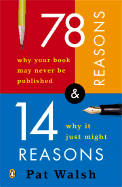I read all kinds of books—history, humor, adventure, sports, nonfiction—but my favorites, by far, are mysteries. And if a book combines history, humor, adventure, sports, or even nonfiction with a mystery, that’s even better. Lately I’ve read two mysteries, one for middle-graders and one for adults, that are both worth blogging about.
 Behind the Curtain
Behind the Curtain, by
Peter Abrahams, is the second book in his Echo Falls mystery series aimed at readers in grades 5–8 (but great for anyone of any age who likes a good mystery). In this outing, intrepid sleuth/soccer star/budding actress Ingrid Levin-Hill is tracking down steriod dealers—discreetly because she’s afraid one of the culprits is her own brother.
Both
Behind the Curtain and the first book in the series,
Down the Rabbit Hole, are adventurous, funny, and fast-paced. One of my favorite aspects of the series is the way Abrahams paints the fictional town of Echo Falls. Setting tends to be an under-appreciated facet of fiction, but an evocative setting such as Echo Falls, with its rich history and social structure, adds depth, believabilty and atmosphere to the tale. The characters are well-drawn, especially my favorite, Grampy, who’s “had it up to here” with nearly everything.
 Desert Run
Desert Run is
Betty Webb’s fourth Lena Jones mystery, and it’s running neck-and-neck with her second,
Desert Wives, as my favorite book of the series. In this installment, P.I. Lena is overseeing security for a crew filming a documentary about the World War II German POW escape from Camp Papago, Arizona. When former escapee Kapitan Erik Ernst, who has moved to Arizona and was the star of the movie, is murdered, Lena plunges into an investigation to clear the Kapitan’s Ethiopian caregiver of the charges. She soon realizes that Ernst’s murder is tied not only to his 1944 escape, but also to the 1944 murder of a family on a nearby farm.
Desert Run is well-written, well-researched, and tightly plotted, and, as in the previous Lena Jones mysteries, includes a bit of social consciousness (in this case, prejudice against immigrants and development encroaching on the natural beauty of the landscape) without becoming preachy. Like
Behind the Curtain,
Desert Run paints a vivid setting. My mom grew up in the Phoenix area, and I still have relatives who live there; I love being able to revisit the Arizona desert and its cities through Betty Webb’s books.
Desert Run also does one of my favorite things in mysteries: It weaves real-life history into the modern-day fiction, then adds an Author’s Note at the back of the book to give readers more information about the 1944 German escape.
 This fall I’ll be participating in the first-ever Kansas Book Festival, which takes place September 29 and 30 in the Lawrence-Dumont Stadium in Wichita. I’m looking forward to connecting with other writers, readers, librarians, teachers, and booksellers.
This fall I’ll be participating in the first-ever Kansas Book Festival, which takes place September 29 and 30 in the Lawrence-Dumont Stadium in Wichita. I’m looking forward to connecting with other writers, readers, librarians, teachers, and booksellers.


